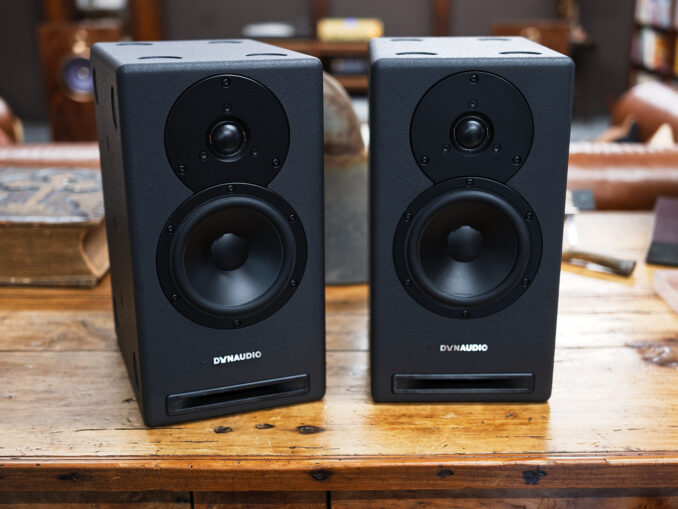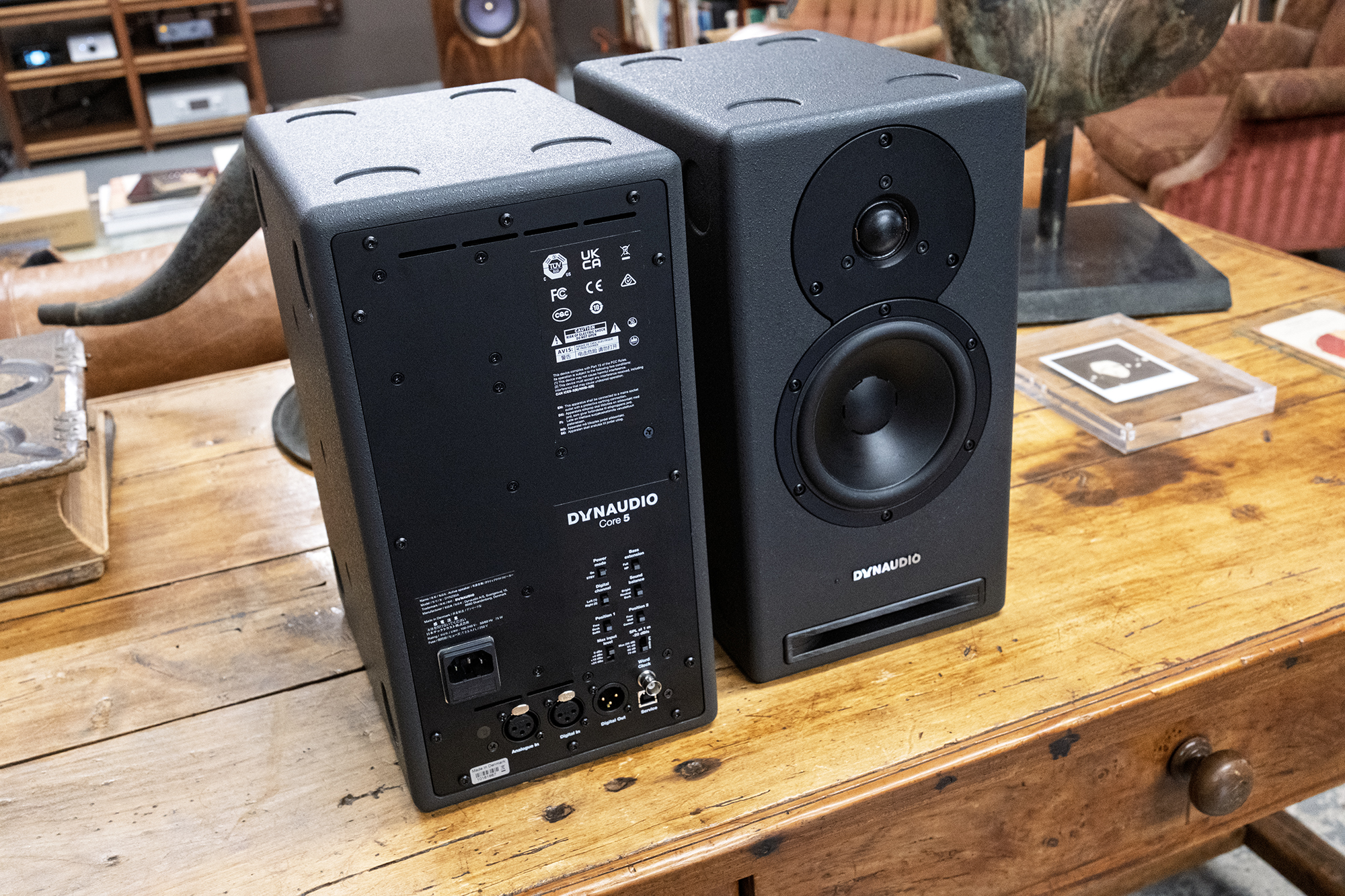
The front-loaded bass reflex Dynaudio Core 5 stand 14″ tall and house a 1.1″ Cerotar Pro soft dome tweeter, a 5″ MSP (Magnesium Silicate Polymer) woofer, a pair of 280 Watt amps per driver per speaker, and a DSP x-over. A lot of speaker for a desktop.
A lot of speaker for a desktop and I can’t wait! to hear what that means.

And a lot of options for inputs and tweaking including balanced XLR analog and AES in, Word Clock in (COAX/BNC) showing that Dynaudio is serious about that Professional Studio Monitor bit (the Core 5 are part of Dynaudio’s Pro Audio line), and a number of switches to tailor performance to speaker position and taste.

When it comes to my desktop, I prefer the studio monitor approach and have lived with my relatively modest but lovely ADAM A3X for 13 years. The Core 5 are bigger in every way, heavier, they go lower (45Hz vs. 60Hz), play louder, and they also look the part of serious listening with that no-nonsense pebbled dark gray finish.
From Dynaudio:
Each speaker has two DSP filters to help you compensate for position and boundary locations. If they’re on your desk, there’s a switch for that (cunningly called ‘Desk’), which deals with first-reflections from the mixing surface. Got them on stands or brackets further away? Choose ‘Anechoic’. And if they’re in a purpose-built wall, ‘Soffit’ is your go-to. Then you can drill-down into ‘Free’, ‘Wall’ or ‘Corner’ modes to compensate for reflections. There’s also a low-frequency 80Hz Linkwitz-Riley cutoff for use with a subwoofer.
You know your room better than anyone, which is why we’ve gone even further and given you Sound Balance options to change Core 5’s overall presentation between ‘Bright’, ‘Neutral’ and ‘Dark’. These are much more than the typical shelving filters found in other brands: these ones use a full-spectrum band-pass filter that tilts depending on the sound you want. In ‘Dark’ mode, you’ll get a 1.5dB decrease at 20kHz, and a 1.5dB increase at 40Hz. ‘Bright’ swaps to the inverse of that. Doing it this way means phase response is maintained between the drivers, which means timing is kept spot-on… which means your soundstage remains crystal-clear.
I sure do know my room (and desktop) so the only question is—will I prefer Dark or Light? Or Neutral? Only time and listening will tell. Stay tuned!
Dynaudio Core 5 Reference Monitor
Price: $1699/each
Company Website: Dynaudio
Specifications
Segment: Pro
Series: Core
Type: Nearfield Monitor
Analog inputs: XLR
Digital inputs: AES3 XLR, BNC word clock 1x BNC word clock
Digital outputs: AES3 XLR
Maximum SPL (Anechoic dB @ 1m): 104
Maximum SPL (Half space dB @ 1m): 110
Amplifier Power Woofer (W): 280
Amplifier Power Tweeter (W): 280
AC Power Input: 100-240V 50/60 Hz
Max Stand-by Power Consumption (W): 0.48
Lower Cutoff (Hz @85 dB +/- 3 dB): 46
Upper Cutoff (kHz @ 85dB +/- 3 dB): 26
Lower Cutoff (dynamic) (Hz @ -6 dB): 42
Upper Cutoff (dynamic) (kHz @ -6 dB): 29
Box Principle: Front-loaded bass reflex
Crossover: 2-way DSP-based
Crossover Frequency (Hz): 3800 Hz
Tweeter: 1.1in Cerotar Pro soft dome with Hexis
Woofer: 5in MSP
Weight: kg 8.6
Weight: lbs 19
Width mm: 190
Depth mm: 265
Height mm: 353
Width inches: 7 1/2
Depth inches: 10 3/8
Height inches: 14
Speakers per packaged box: 1
Finishes: Dark Grey
